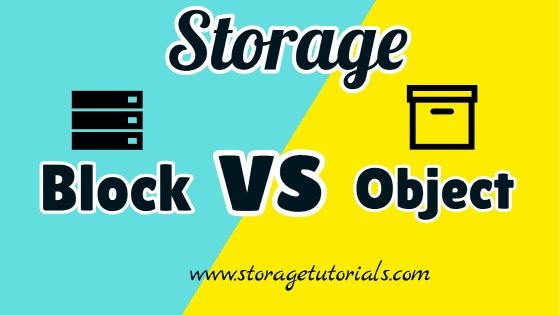
- #Block vs file storage archive
- #Block vs file storage software
Metadata can be very detailed and capable of storing information on where a video was shot, which camera was used, and who the actors featured in each frame are. It is crucial, and it includes details such as access contingencies, age, privacies, and securities. They work as a self-contained repository that owns data, a specified identifier that allows objects found over a distributed system, and the metadata that describes the data. Object Storage volumes are modular units. It is kept in a single repository rather than kept as server blocks or in folders. In object storage, the data is broken or divided into discrete units or objects.

Object Storage or object-based storage is a flat structure containing file pieces and spreading them among the hardware. Object Storage, File Storage, and Block Storage.In addition, compared to Object Storage and File Storage solution, the higher price and complexity.

The main disadvantages of Block Storage are the lack of metadata, which limits organizational flexibility. When a user or application requests data from a block storage system, the underlying storage system reassembles the blocks of data and presents the data to the user or application. This creates multiple paths to the data and allows the user to retrieve it quickly. Each block is given a unique identifier that allows the storage system to reassemble the blocks when the data they contain is needed.Ī block storage system is used when it is important that data can be retrieved and manipulated quickly, with an operating system directly accessing those data points across block volumes.īlock storage also decouples data from user environments, allowing that data to be distributed across multiple environments. In this type of system, data is broken into pieces called blocks and then stored in a system that can be physically distributed to maximize efficiency. Many cloud-based enterprise workloads currently use block storage.
Storage of data that requires data protection and ease of deployment. Storage of files in a small development or data center environment that provides a low-cost option for local archiving. Storage of files for an office or directory in a content repository such as user profiles or group drives. This happens when data grows in the enterprise. The disadvantage of file storage systems is that there comes a point where the hierarchy and permissions become too complex and slow the system down. This makes it easy to share access and thus easy to collaborate. When storing files in the cloud, as on a single computer, an administrator can easily set access and editing permissions for files and trees, making security and version control much easier to manage. However, using file storage in the cloud adds a key element: sharing. The main advantage of file storage is the accessibility of file storage. To access a file, users or computers need only the path from directory to subdirectory to folder to file. These files are in turn organized into folders, and these folders are then hierarchically organized into directories and subdirectories. With File Storage, data is stored in files. 
#Block vs file storage archive
Storage of large amounts of media assets such as video footage as an archive instead of local tape drivesįor organizations that require a friendlier user interface but lower storage requirements, File Storage is the recommended storage solution. Storage of unstructured data such as multimedia files. #Block vs file storage software
Media production companies therefore often use third-party software that layers the organization schema on top of the object storage. The 128-bit identifier is not user-friendly for some users – and the metadata management approach may prove too complex or inappropriate for certain use cases.
Thanks to the unrestricted nature of metadata, organizations are enabled to easily implement their own policies for data preservation, retention, and deletion. Unlimited scalability through the use of GUIDs instead of the hierarchies characteristic of file or block storage. Thanks to flat structure, storage of huge amounts of unstructured data is enabled. The main advantages of object storage are that it allows the storage of huge amounts of unstructured data and at the same time allows easy data access. Metadata is any information used to classify or characterize the data in a particular object. In fact, the identifier is so complex that it allows each identifier to be considered unique. So this means that the identifier – the “name” of the object – is a kind of complex number. When data is added to Object Storage, it is usually given an identifier called a Universally Unique Identifier (UUID) or a Globally Unique Identifier (GUID). Object Storage is a collection of data with a unique identifier and an infinite amount of metadata.







 0 kommentar(er)
0 kommentar(er)
